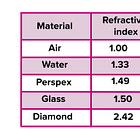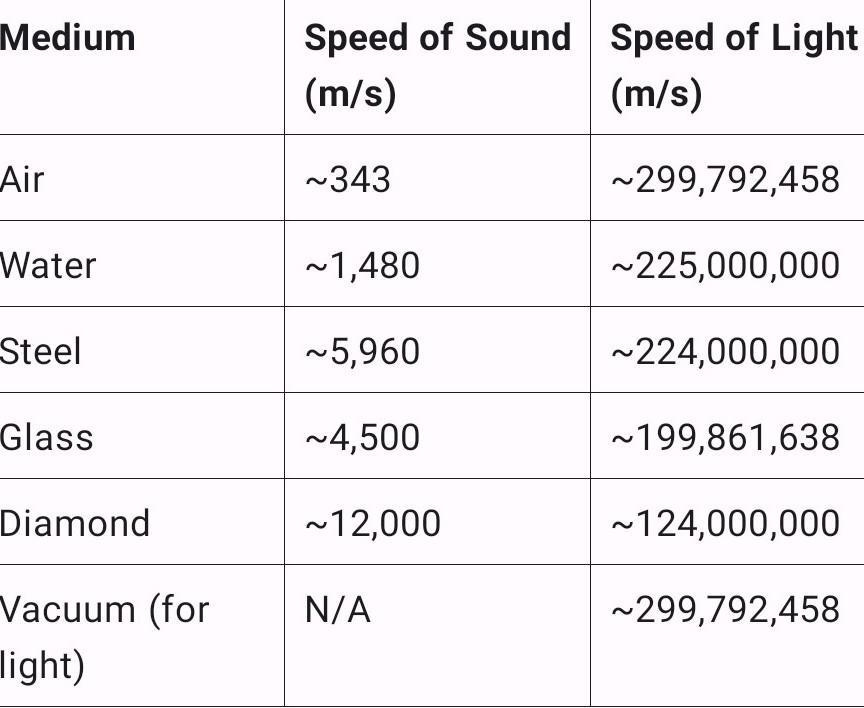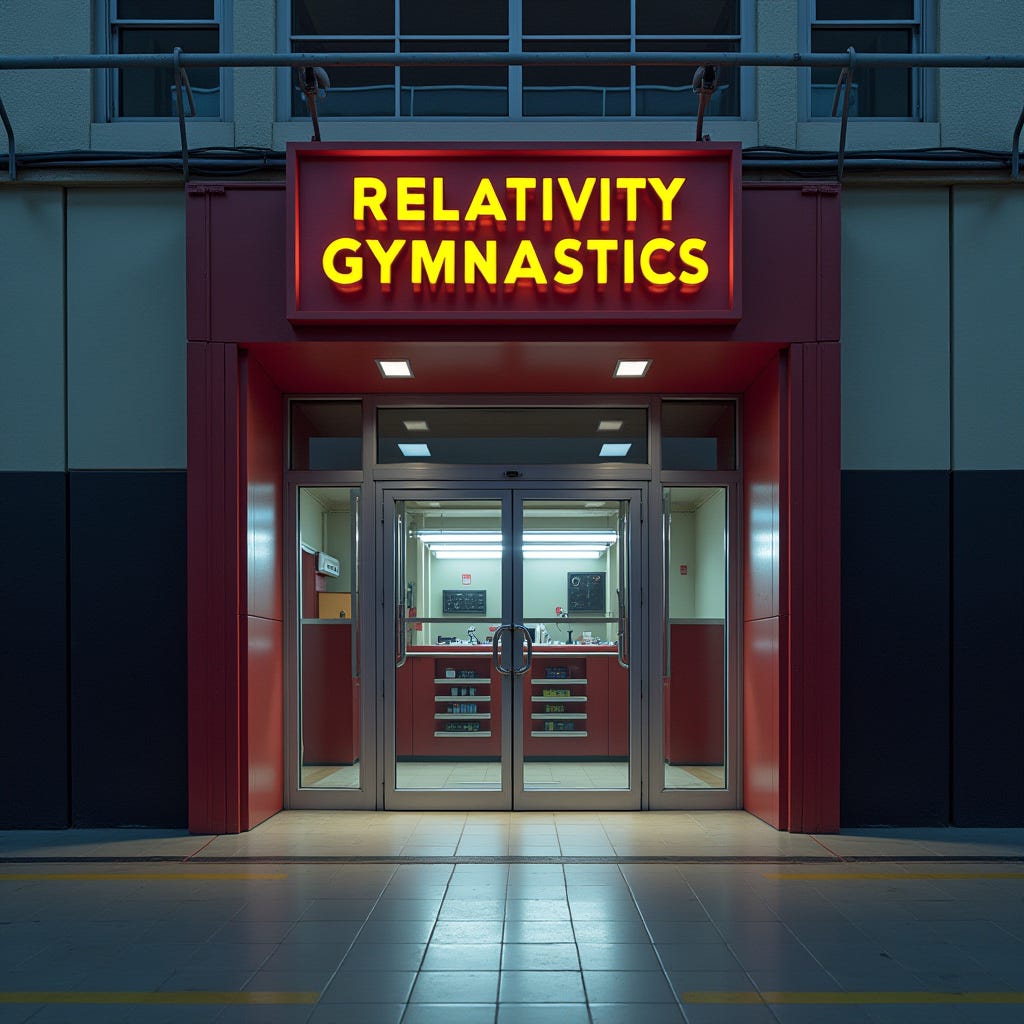Einstein admits the Speed of Light is variant. A core 'postulate' of STR is proven invalid by its inventor.
Einstein or Einstotle was a philosopher, not a scientist. He even states that himself.
Einstein: “What do the colleagues say about giving up the principle of the constancy of the velocity of light?” and, “The further development of the theory of gravitation meets with great obstacles.”
(June 1912 letter from Einstein to one of his disciples, Heinrich Zangger, in Einstein’s hagiographer, Abraham Pais, Subtle is the Lord, p. 211)
Einstein was asking his camp follower Zangger, if the rather noisy and violent disciples of Relativity, or ‘the colleagues’, might be willing to denounce light speed invariance? After all there is the great ‘obstacle’, namely that the invariance of light speed in Special Relativity and Einstein’s ‘new’ General Theory of Relativity (GTR) with its ‘gravitational aether’, are at odds and incompatible. Would the ‘colleagues’ be amenable to some sophistry to amend the gap, Einstotle asks Bishop Zangger?
By 1912, Einstein fully comprehended that he had to modify his claim about the constancy of the speed of light, since the c postulate (light speed invariance) of the Special Theory (STR) only applied in the absence of gravitational fields which is what GTR was proposing. Therefore, light speed invariance was wrong. A conundrum indeed. How to save his STR while elaborating the ‘mathematical proofs’ for his GTR?
‘Settled Science’. It is to laugh.
STR is jettisoned
By 1912, the ‘Special’ Theory of Relativity (STR) issued in 1905, which is entirely wrong (it denies an aether and has nothing to say about gravity); had to be amended to align with the General Theory of Relativity which had to reinstate both the aether and gravity. How to do this?
One of the 2 key ‘postulates’ in STR is that light speed is invariant (the other is that space and time are merged, which they are not). Light speed constancy has been disproven thousands of times. Invariant light speed is also unsupported by GTR’s theory about gravitational waves. For the Relativists it is a real mess.
Hence Einstotle’s confusion and his inquiry to one of his Bishops, whether the cult would much mind if they rubbished the idea that c was a constant. The little philosopher continues:
“[Einstein] ’In a similar manner we see ‘unmittelbar’ [immediately] that the principle of the constancy of the velocity of light in a vacuum must be modified. For one easily recognizes that the path of a beam of light, relative to K’, must generally be crooked, when the light, with respect to K, moves in a straight line with definite constant velocity.’”
[Arthur Lynch, the author who quotes the Einstotle above, continues];
…Einstein, having postulated the constancy of light, is content to “modify” it when his own reasoning leads him to contradiction; but he does not touch the previous mode of thought that led him to decree this constancy.”1 (first para. also found in Annalen der Physik, Einstein, 1916)
Settled science.
Variance
The idea of making light speed variant, which it most certainly is, did not go down well the Relativity cult. A key ‘postulate’ or gospel commandment was being broken: ‘Thou shall believe in the invariance of light speed!’
Justifiably, Einstein’s acolytes felt that they now looked foolish, naïve and gullible. If their savior was wrong about light speed, what else was he wrong about? Physicist E. J. Post records that the version 2.0 update of light speed was not well received by Relativity’s faithful:
“At the end of section 2 of his article on the foundations of the general theory, Einstein writes: “The principle of the constancy of the vacuum speed of light requires a modification.” At the time, Max Abraham took Einstein to task (in a rather unfriendly manner) about this deviation from his earlier stance.”2
From the 1930s to the 1950s, physicist and inventor of television distribution, Hebert Ives, wrote extensively on the nonsense of time within Relativity and the ‘self-contradictory’ nature of Einstein’s principle of the constancy of the speed of light.3 Unlike Einstotle, Ives was a hands-on engineer who invented, created and used experiments to back up his theories. His criticisms remain unanswered and simply ignored. He knew that the Einstotle was making things up.

Word Salads to the rescue
Of course, from the time of Ives and down to our period, most popular Relativists may have privately admitted that the speed of light is not always constant in vacuo, but they will publicly go through the most strained semantic contortions in order to deny this simple fact. Relativists are agile gymnasts, flexible, fungible, and infinitely elastic.
As we all know, the only right answer to any question is that, ‘it proves Relativity’!
(now please pass me, confer the degree, give me the grant money, publish me, and give me tenure, and print out the clever-club membership card, thanks ‘science’!)
Relativist Clifford Will explains using a considerable semantic-word salad, why light speed is variant but really invariant depending on the ‘Observer’. Such an explanation is standard fare in textbooks and ‘education’. When in doubt invoke ‘Observer’ or ‘Frame of reference’ (or in Will’s language a ‘particular coordinate system’):
The speed of light is indeed the same in every freely falling frame, but we are forced to consider a sequence of such frames all along the light path, and when we do so, we find that the observer at the end of the path determines that the light took longer to cover a given trajectory when it passed near the Sun than it would have had it passed farther from the Sun. Whether or not the observer used the words “light slows down near the Sun” is purely a question of semantics.
Because he never goes near the Sun to make the measurement, he can’t really make such a judgment; and if he had made such a measurement in a freely falling laboratory near the Sun, he would have found the same value for the speed of light as in a freely falling laboratory far from the Sun, and might have thoroughly confused himself.
All the observer can say with no fear of contradiction is that he observed a time delay that depended on how close the light ray came to the Sun. The only sense in which it can be said that the light slowed down is mathematical: in a particular mathematical representation of the equations that describe the motion of the light ray, what general relativists call a particular coordinate system, the light appears to have a variable speed. But in a different mathematical representation (a different coordinate system), this statement might be false.4
What an absurdity. What Will is saying is that if I change the frame of reference and the observer, I can mutilate the maths enough to get back to light speed invariance, even though within my own reference frame I have measured variance! Will goes on for six more pages using charts, diagrams and more maths to convince the reader that his above paragraphs say something intelligent.
The cult is wrong
Physicist Charles Lane Poor writing in the 1920s, reveals that Relativity’s postulates about light are complete bunk:
“…(thousands of experiments which prove light speed variance eg Sagnac 1913, Michelson 1887 etc)….To overcome this mathematical difficulty, or inconvenience, as he calls it, the relativist makes a substitution, or approximation. Instead of using the direct distance between the centers of two particles of matter, the relativist adds a small, a very small, factor to this distance; or, as Eddington (English physicist and Relativity marketer) puts it, ‘we shall slightly alter our coordinates.’ Such an approximation is very common among physicists: it is done every day to simplify troublesome formulas. The only precaution necessary in such a procedure is to remember always that the final result is necessarily approximate, and, before drawing any conclusion, to thoroughly test the effects of the approximation.”5
Relativists rarely resort to ‘testing’. That involves experimentation. To generate the right answer, Relativists artificially manipulate their equations, the ‘observer’ and the frame of reference. In this same 1923 paper Poor states:
“But the method is faulty and contains obvious errors, and the fundamental formula for the velocity of light, upon which the entire method is based, is in direct contradiction to the principle of equivalence, for it shows that the speed of light decreases as it approaches the sun, while the equivalence principle demands that such velocity should increase” (ibid., p. 12).
Poor is correct and his real physics supports the contention that light speed does vary, and varies considerably. As written in many posts, it is highly unlikely that the purported speed of light of 186.000 miles per second, is at all accurate or relevant. Thousands of experiments declare the opposite.
In reality, using common sense, there is no valid way to measure such a high speed between 2 objects, or 2 points with the second reflecting back to the first. Any such measurement would be at best, a very gross and inaccurate assumption.
For all his egocentricity and large-mouthed marketing, Galileo was far closer to the truth when he said that light speed is simply, ‘instantaneous’. The medium, the aether, the materiality of space, gravity, electromagnetism, radiative pollution, signal frequency interference, velocity of the sender, trajectory and speed of a receiver, and many other facts must and would affect light speed. An ‘in vacuo’ does not exist.
Einstein’s denies the constancy of Light
In Einstein’s 1913 paper [1, V4, D13, p.153] the great ‘scientist’ writes:
“I have shown in previous papers that the equivalence hypotheses leads to the consequence that in a static gravitational field the velocity of light c depends on the gravitational potential. This led me to the view that special theory of relativity provides only an approximation to reality; it should apply only in the limited case where differences in the gravitational potential in the space- time region under consideration are not too great”. (‘The Collected Papers of Albert Einstein’, Princeton University Press)
You can take an axe to this.
First his apriori assumptions, never proven, is that space and time are merged and gravity is static. This is not scientific.
Second, given he believes that the gravitational potential in space is ‘relative’ for every ‘star’, the velocity of light in a vacuum is no longer constant.
Third, the firm proclamation that the velocity of light is the ultimate and constant velocity in the vacuum of the void space is thereby wrong.
Fourth, in vacuo, there is no carrying substance for light propagation and that nothing can influence the ultimate velocity of the light in the vacuum.
All of the above is absurd.
What does NASA use?
It is unfortunately not well known that GPS systems and NASA do not use Relativity, in their calculations of communications or travel. This has been uncommon knowledge since at least the 1970s. Physicist Bryan Wallace was shocked when he discovered that the NASA Jet Propulsion Laboratory premised their analysis of signal transit time in the solar system on the Newtonian and Galilean concept of c + v (i.e., the speed of light plus the speed of the source or medium of light) and not c as required by Einstein’s theory.
When Wallace made this known he was censored and threatened. He penned a letter to the editors of Physics Today, dated July 9, 1984, stating the obvious:
The fact that the radio astronomers have been reluctant to acknowledge the full theoretical implications of their work is probably related to the unfortunate things that tend to happen to physicists that are rash enough to challenge Einstein’s sacred postulate [B. G. Wallace, Physics Today, 36, (1), 11 (1983)]…..
Over twenty-three years have gone by since the original Venus radar experiments clearly showed that the speed of light in space was not constant, and still the average scientist is not aware of this fact! [B. G. Wallace, Physics Today, 37 (6), 15 (1984)].”6
Physics Today refused to publish the letter, deeming it unworthy and outside of the ‘consensus’ (letter to Wallace dated Jan. 4, 1985). Wallace tried other publications. These were also rejected. Wallace was of course correct.
The simple truth is that if the speed of light was discovered not to be constant, modern scientific theory would be devastated.7
Einstein’s gymnastics
Even though Einstein knew that light speed was variant, he understood he could cloak the differential between STR and GTR in complicated maths no one would audit, investigate nor understand. In a letter to Relativity preacher Paul Ehrenfest in 1912, the little philosopher writes:
“I certainly knew that the principle of the constancy of the velocity of light is something quite independent of the relativity postulate.”9
Einstotle even admits STR’s light speed invariance is untrue.
As many scientists have proven, it is simply false that there are no differential equations to account for the ‘many velocities’ of light8. Einstein and his cult were able to hide behind maths and use disciples such as Wilhelm de Sitter to offer ‘proofs’ for constancy of light speed. Einstein references de Sitter in his co-authored book The Evolution of Physics in 1938, to supposedly support his flexible interpretation of light speed (invariant for STR, variant for GTR).
When anyone has analysed such ‘proofs’, they of course, go ‘poof’.
In 2004, John D. Norton, University of Pittsburgh, Dept. of History and Philosophy of Science, showed how Wilhem de Sitter actually ‘debunked’ Einstein’s hypothesis requiring the need for light’s constancy in order to produce shadows. This is so typical of Einstein and his cult. If the truth is that ‘up means up’, they will declaim that ‘up is down’ and their maths have proven it. Norton also exposed the fallacy of Einstein’s claim that there were no differential equations to account for the ‘many velocities’ of light.10
Physicist Herbert Dingle, a Copernican, and who was the world’s foremost Relativity expert in the 1940s and early 1950s before apostasing, went through de Sitter’s ‘proof’ for the constancy of light, based on light measurements as determined by binary stars. Dingle was unimpressed and writes:
“This is, I think, the most remarkable example in the history of science of the wish fathering the thought… A finite velocity, of course (and it is not disputed that light in vacuo has a finite velocity) must be measured with respect to some standard, and if we do not accept…that the standard is empty space…the only alternative with any claim to consideration is that the velocity c is maintained with respect to the emitting body.
But all that de Sitter’s arguments disprove is that the velocity is maintained constant with respect to the Earth, for it is with respect to the Earth that the velocities c + v and c – v are reckoned, and surely no one in his senses would now maintain that the Earth provided a standard of rest for all the light in the universe…”10
Dingle is right. As used by NASA and GPS systems, Galilean and Newtonian expression of light speed and velocity disprove Relativity (c + v and c – v). Light speed is not only variant, but it will be variant based on the source as well as the receiver. This is anathema to the cult of Relativity.
Bottom Line
When you review the literature, it is clear that Einstein had no idea about the true nature of light or its alleged speed. The objective for the Relativity cult was to get the maths equations to balance and produce the desired results. The objective was not to use experimentally validated mechanical proofs to verify any of their claims. The intent was to describe all of physics and physical reality, using mathematics and philosophy.
If constants and manufactured adjustments were needed to do this, so be it. If in one ‘Relativity’ theory light is invariant, but in the second, it can be variant, so be it. If real world experimentation disproved invariance such as Sagnac in 1913, than ignore such trivialities and prepare the word salads to semantically cook up an explosion of vegetable confusion that no one understands or can digest.
The truism about Einstotle is simply this – he was a philosopher, not a scientist. He even admits this.
“…by the reading of David Hume’s and Ernst Mach’s philosophical writings….It is very well possible that without these philosophical studies I would not have arrived at the special theory of relativity.”
(Letter to Carl Seelig, as cited in Albert Einstein—A Documentary Bibliography, p. 67, cited in Max Jammer’s Einstein and Religion, pp. 40-41)
Einstotle never arrived at Relativity from experimentation. It was a philosophical thought experiment. Relativity is not ‘science’.
All hail.
==
1 The Case Against Einstein, Arthur Lynch, pp. 209-210. See also Stephen Hawking’s citation of this quote in A Stubborn Persistent Illusion, 2007, p. 49 and Annalen der Physik, 49, 769 (1916).
2 E. J. Post, Physics Today, 35 (6), 11 (1982).
3 Proceedings of the American Philosophical Society 95: 125-131, 1951; Journal of the Optical Society of America 38: 879-884, 1948; 27: 263-273, 1937
4 Clifford Will, Was Einstein Right? pp. 112-113.
5 Charles Lane Poor, “Relativity: An Approximation” Paper presented to the American Astronomical Society, Thirteenth Meeting, 1923, Mount Wilson Observatory, California
6B. G. Wallace, “Publication Politics” in The Farce of Physics, 1994
7 Quote from Marilyn vos Savant who held the Guinness world record for the highest IQ of 228 (although some tests put it at 186). Question to Savant from Jennifer Webster in Parade magazine, May 22, 1988: “What one discovery or event would prove all or most of modern scientific theory wrong?” Savant answered that the speed of light was wrong. She also offered: “And if a divine creation could be proved to have occurred, modern scientists would be devastated.” No kidding. Mass suicides everywhere.
8 Einstein to Ehrenfest, June 3, 1912, Doc. 404, 409, in Papers, vol. 5, cited in “Einstein’s Investigations of Galilean Covariant Electrodynamics Prior to 1905,”
John D. Norton, University of Pittsburgh, Dept. of History and Philosophy of Science, Jan. 28, 2004, p. 24.
9 Ibid, p. 25
10J. D. Norton, p. 25
11 Herbert Dingle, ‘Science at a Crossroads’, 1972, p. 205









When I was in high school Physics class, I asked what causes gravitation. Everyone laughed. Now I realize we didn't want to know due to accepted math models that provide no physical evidence.